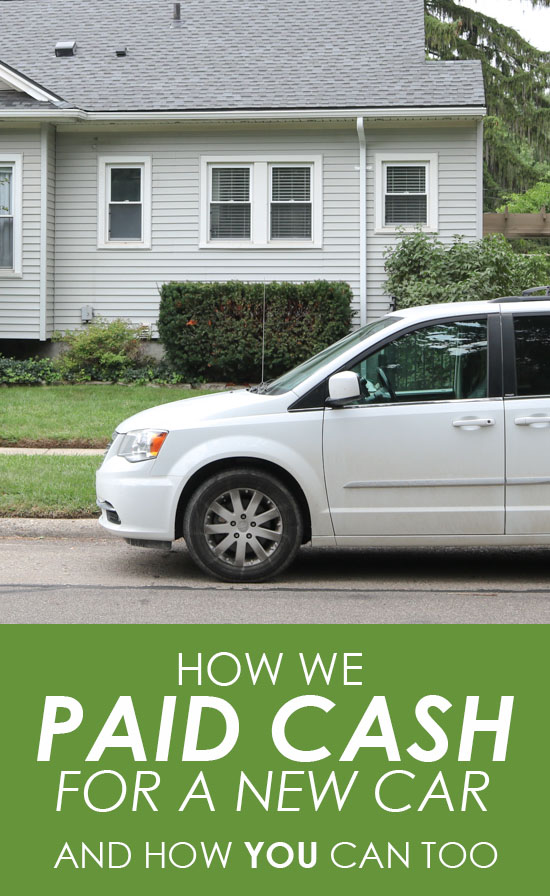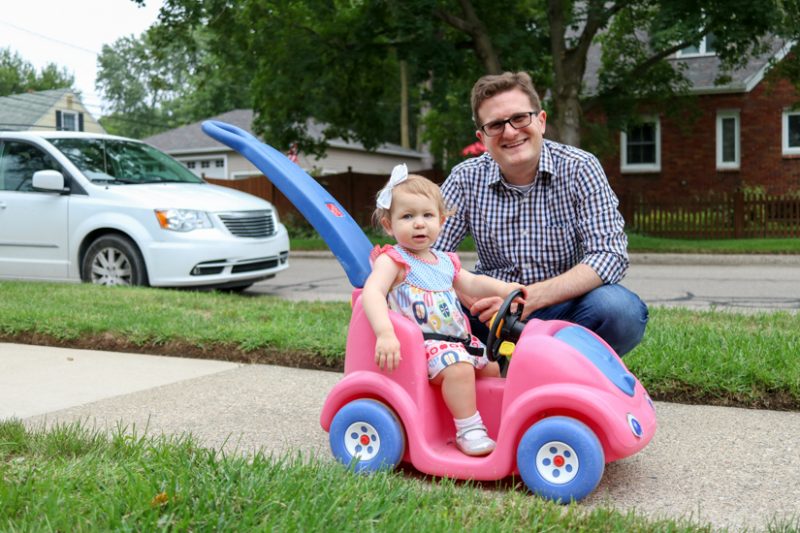So you may have read in one of Maria’s recent posts (specifically, the one about our recent no-good, terrible week that just would not end) that we bought a new-to-us van. If there’s one lesson that was truly driven home to me in that whole car-buying experience, it was this: I am so, so happy that we follow Dave Ramsey’s advice to use sinking funds to save for expenses we know are coming up. I’ve talked about sinking funds before, but this whole car debacle is the perfect illustration of why such a simple concept can be such a life saver. This is the story of how we successfully paid cash for a new car after an unexpected bad turn of events and how you can do it too.
This post contains affiliate links. We earn a small commission each time someone makes a purchase through one of our links, which helps to support the blog.
What The Heck is a Sinking Fund?
A sinking fund is just saving up for an expense. That’s it. You can put the money anywhere. It could be in an envelope (though you should probably only do that for small expenses), it could be in a bank account of some sort, or (if it’s a really long way off) you could save it in an investment account. Maria and I keep our sinking funds in a simple savings account at our bank. We have a lot of sinking funds (I just counted 29 in total), but they are all kept in that one savings account. We just use a spreadsheet to keep track of how much is in each sinking fund. Interested in seeing what our spreadsheet looks like? You can download a FREE template right here!
Every month, when Maria and I write up our monthly budget, we look at expenses we know are coming up that we should save for. These expenses might be as short-term as saving money for the water bill (since we’re billed every three months), or longer term, like saving money for a pre-owned, new-to-us car (which, thank God, we have been doing!)
At the end of the month, when we clean up our budget, we transfer all the money budgeted for our sinking funds to the savings account and note in our handy spreadsheet how much was added to (or subtracted from, if we spent the money we’d been saving up) each sinking fund. To be sure that our bookkeeping in the spreadsheet is accurate, we compare the total of the sinking funds to the total amount of money in the savings account. If they match, our spreadsheet is correct. If they don’t, we screwed up somewhere and we have to figure out what we screwed up. It sounds complex at first, but it’s really simple in practice.
Our Car Buying Experience with a Sinking Fund
Since Maria and I had been saving all along for a new-to-us car, we had money ready to go buy a car when we needed to replace our Ford Focus (may it rest in peace). All we had to do was shop. Fortunately, Maria already knew pretty much exactly the van she wanted and a nearby dealership had one in its inventory that fit perfectly in our price range. Once we’d taken the van for a test-drive and negotiated the final price, all we had to do was run up to the bank and get a cashier’s check drawn from our savings account.
And the best part? It was stress-free. There wasn’t any freaking out about being able to afford a car. There wasn’t any worry about qualifying for financing. We just handed over the check and drove off in our new minivan. And now that we’ve bought the minivan, we’re still making our own version of “car payments.” They’re just going to our savings account to save up for the next time we need a new vehicle, rather than to pay back a loan with interest. Right now we have exactly $1,232.45 saved up for our next vehicle. We still have a lot of saving to do, so let’s hope we don’t need to buy another car for at least a year.
Why You Should Use Sinking Funds
That stress-free car buying experience is why I cannot recommend enough that you use sinking funds to save up for purchases that you know will happen. Like I said earlier, Maria and I have 29 sinking funds for various things like:
- Home repairs
- New furniture
- Vacations
- New cell phones
- Amazon Prime membership fee
- Insurance premiums
- Christmas presents
- And anything else that we know we’ll be paying for in a few months.
If you want to learn more about the nitty-gritty of sinking funds and how we use them, check out this post, which has a whole lot more detail.
I know for sure that we plan to get Dessa started early on using good financial practices (though sinking funds might be a little too advanced still for a 13 month old). One of our friends gifted us with a copy of Smart Money, Smart Kids by Dave Ramsey and Rachel Cruz when Dessa was born and it had so many practical tips that we can’t wait to put into practice as Dessa grows. Her cute little pink car won’t last forever and it won’t be long until we are teaching Dessa to save for a vehicle of her own.
And just in case you’re wondering, we save for long-term financial goals, too – like our retirement and Dessa’s college, but anything that takes more than a few years to save up for goes in to IRAs, 401Ks and other long-term investment accounts – but that is a different blog post topic for another time.














